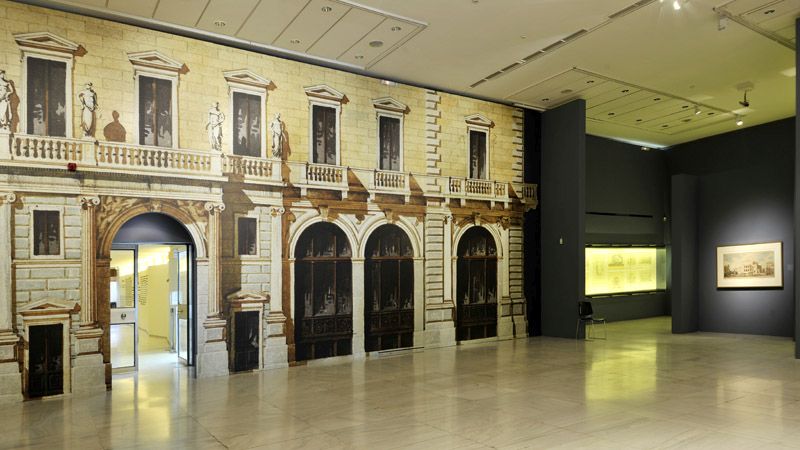
From 22.03.2010 to 15.10.2010
When it became the capital city of the kingdom of Greece, in 1834, Athens was still a village as far as urban planning was concerned – indeed, a decaying village. European architects and urban planners participated in the interventions made already in the early years of the reign of Otto, who regarded the rebirth of Athens as a “European cause”. This rebirth, naturally, was a long time in coming. It was Ernst Ziller who bestowed a European colour upon the city that he chose to make his life-long home.
Born in 1837, in a small village in Saxony, near Dresden, the German architect, painter, researcher and lover of antiquity came to Athens as a very young man, in 1861. He was invited by the great Danish architect, and his teacher in Vienna, Theophilus Hansen, to work as an architect-project manager for the Academy, funded by Sinas. The great Greek magnate and benefactor, Baron Simon Sinas, generously funded the first major public building project in Athens. The building was made entirely out of Pentelic marble in a “transcription” of the revered Erechtheion on the Acropolis. Supported by Hansen and Sinas, Ziller developed his connections with most of his local and international future clientele, particularly during the reign of George I.
The ancient remains immediately captured the heart and mind of the ambitious young architect: he discovered the Panathenaic Stadium, excavated and produced plans of the Theatre of Dionysus at the South Slope of the Acropolis. He studied the architectural structure of the Parthenon, produced drawings of the pediment remains. He was among the first to note the polychromy of the statues and the architectural features of the Theseion, the Erechtheion, the temple of Aphaia on Aegina, which he transcribed in the ornamental features of the houses he designed. His style, inspired by Antiquity, Byzantium, Renaissance, as well as by northern European characteristics may be defined as eclectic within the context of neoclassicism.
His early works include many theatres: the Athens Municipal Theatre (Kotzia Square, demolished in 1940), the Royal [now National] Theatre, the Patras Theatre, the Zante Theatre (destroyed in the 1953 earthquakes). He oversaw the implementation of Hansen’s projects: the Academy, the Zappeion Hall, the National Library, and the National Archaeological Museum. He made proposals for the embellishment of the Lycabettus Hill to develop a recreation park for upper-class Athenians (Ziller is also credited with having trees planted on the hill). He is the architect of today’s Presidential Hall, then crown prince Constantine’s palace, and several private mansions: “Iliou Melathron” for the amateur archaeologist Erich Schliemann, and the Melas, Othon Stathatos, Deligiorgis, Kalligas, Psychas, Pesmazoglou mansions. He built the German and the Austrian Archaeological Institutes, villas in Kifissia and the Ziller district in Piraeus, the Bageion and Alexandros hotels in Omonoia Square, churches at Aigion, Velo near Corinth, Vilia in Attica, St Athanassios at Pyrgos, Haghios Loukas at Patissia, Haghia Triada on Pireos Street, as well as markets and schools in several cities in Greece. The total number of his projects is over 500.
The architect combined an artist’s creative thinking with the aesthetic training of the era of King George I. Ziller was fortunate to build in a land dotted by classical remains, which fascinated the Germans; moreover, he was fortunate enough not to build, as his teacher and friend Hansen had, his neoclassical buildings in the mist of Vienna and Copenhagen, but in the sun-drenched Athens. The city’s size necessitated different scales and proportions from those of the capitals of the North. It demanded differentiation and adaption to local aesthetic, natural and historical realities. Ziller was evidently able to adapt. More than any other architect, he influenced, and was influenced by, the local architecture.
The largest and most important part of his work, comprising watercolours, studies, construction designs for his most famous projects, as well as proposals for public and private buildings and mansions in Kifissia and Piraeus, documents, studies, personal records, monument photographs, and more, has been in the National Gallery of Greece since 1961.
In addition to the complete drawings (approximately 400), documents, letters, photographs and other exhibits from the Ziller archive in the National Gallery, this exhibition features drawings from private and public collections in a unique exhibition bringing together the architectural heritage of four European countries: Germany (Ziller’s native country), Denmark (the native country of his teacher, Theophilus Hansen), Austria (where both his teacher and the great benefactor Simon Sinas had been active), and Greece, where Ernst Ziller worked and realized his architectural masterpieces.
The exhibition was curated by the Art Historian and Doctor of the University of Munich, Marilena Z. Cassimatis, Curator at National Gallery of Greece.
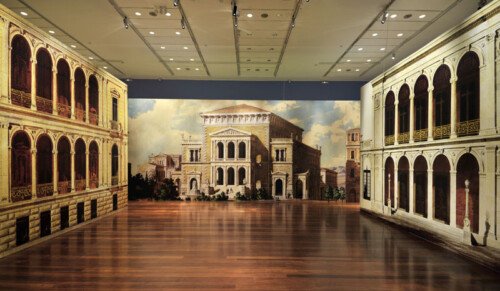
1
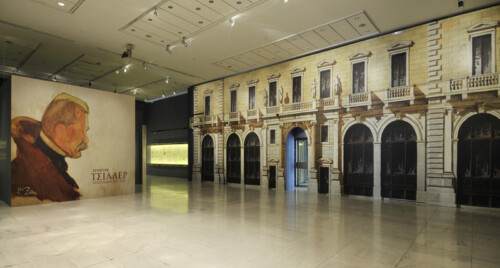
2
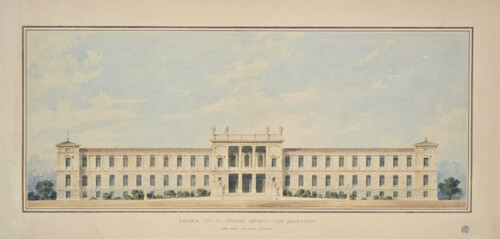
3
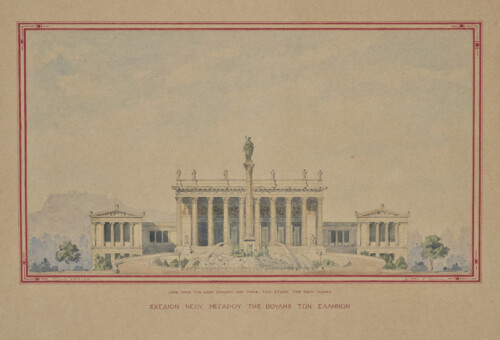
4

